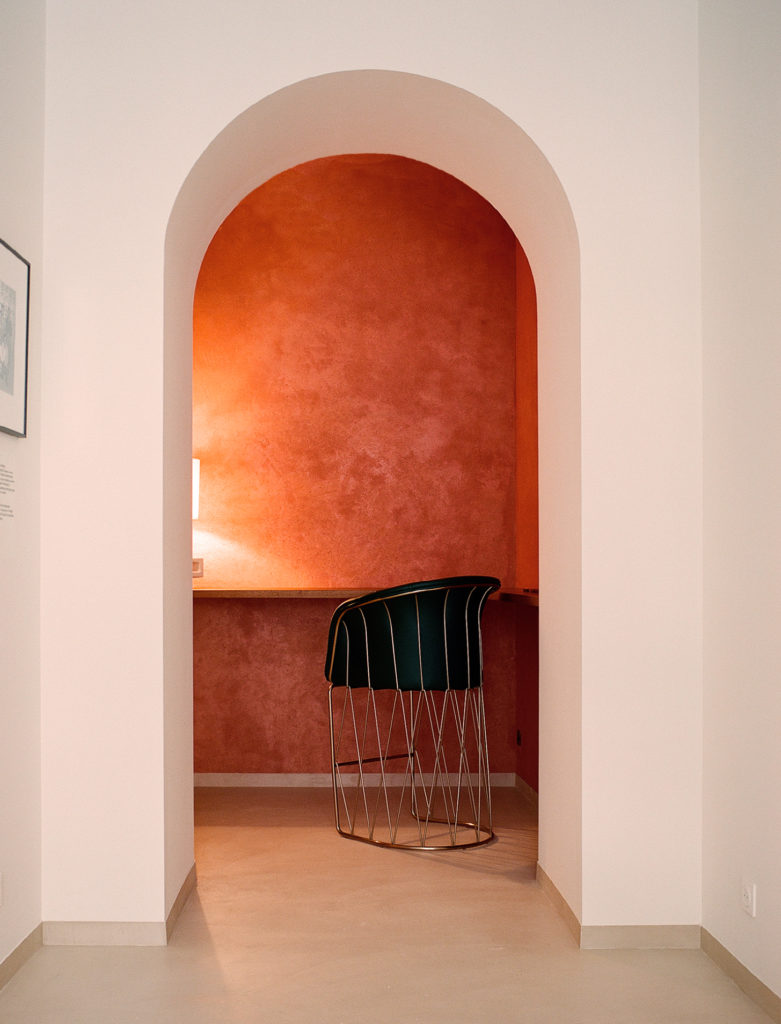The brand Luteca, founded in New York in 2015 by Amanda and Sébastien Réant, invites you to discover Mexican design, still little exported today, in its Parisian showroom. Move over folklore. And make way for contemporary pieces inspired by Mexico’s cultural heritage as well as reproductions of twentieth century modernist furniture by great masters of Latin American design.
A mixture of Bauhaus and pre-Columbian
Luteca is, above all, a story of passion. Sébastien Réant’s passion for Mexico and its rich cultural heritage. “I have always been fascinated by Aztec mythology and Mayan civilisations,” he says. Based in California, the consultant in high-end hotels and boutique hotel concepts has criss-crossed Mexican soil for over fifteen years, discovering unique, artisan know-how there as well as major figures in architecture and design. Like Pedro Ramírez Vázquez, architect of the famous Basilica of Our Lady of Guadalupe, as well as the iconic visual identity of the Mexico City Olympics in 1968. “Throughout his career, he has designed remarkable projects that mixed a European modernist sensibility with pre-Columbian inspirations,” recalls Sébastien Réant. “In his archives, we found designs of furniture that had never been produced.” In 2015, Sébastien and his British wife Amanda, director of a large design group in the United States, launched a début capsule collection in New York around these never-before-seen pieces. Instant success. The press and the American market were thrilled with this mix of Bauhaus and pre-Columbian.
Three collections
The duo then focussed on making known other great masters of Mexican design, such as Michael van Beuren, a brilliant designer trained at the Bauhaus and based in Mexico, and Clara Porset, the “Latina Charlotte Perriand.” “Of Cuban origin, this design pioneer studied architecture in New York and Paris in the 30’s before settling in Mexico where she spent her life defending her vision of modernity combined with historical artisan traditions. Her universal style brilliantly mixes pre-Columbian, colonial and brutalist influences, as can be seen in her interpretation of the Butaque lounge chair.” Alongside these visionaries, grouped into a collection named the “Classics,” Luteca also surrounds itself with today’s talents, producing contemporary pieces that draw on Mexico’s architectural heritage. This is the case of Jorge Arturo Ibarra, whose Dorcia sofa, for example, is inspired by the front door of architect Luis Barragán’s famous pink ranch or Studio Martès whose Kiin chair has found its place in the “Contemporary” line.
Revisiting traditions to make innovations
Finally, with the “Woven” collection, Luteca reconnects with the ancestral uses of palm weaving in a line of furniture suitable for both indoor and outdoor use at home. “This very ancient technique, carried on by a small community of Mayans, was disappearing. There are only a handful of master craftsmen left and we are committed to developing apprenticeship programmes to transmit and highlight this unique know-how,” affirms Sébastien Réant. Driven by a desire for inclusion, the company makes a point of combining artisan know-how, innovation and an environmental approach. Luteca has thus created a whole network of workshops in Mexico, the United States and Europe, to improve the design of pieces, integrate local materials such as tulle, palm or cactus leather and promote the transmission of knowledge. And successfully, too. Now open in New York, Mexico, Los Angeles and Paris, the brand has won the challenge it set itself: to build a bridge between Mexican traditions and innovative techniques to promote contemporary and sustainable design.











